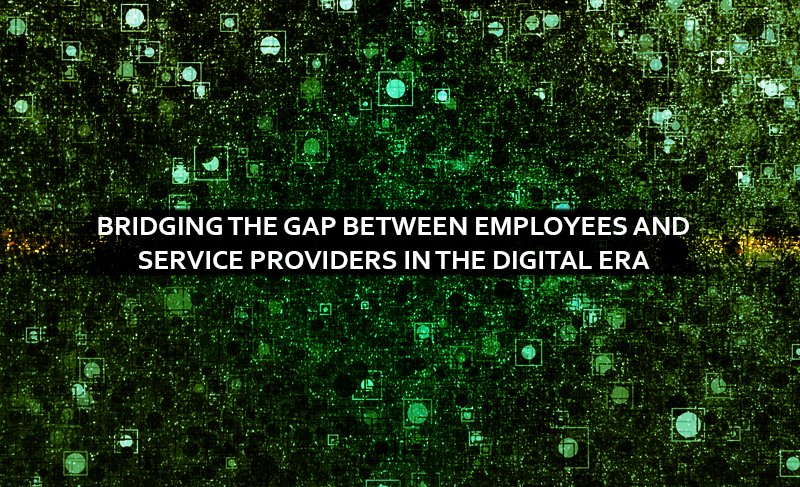
Bridging The Gap Between Employees And Service Providers In The Digital Era
“Digital transformation is a crucial medium to bridge the gap between the employees and the service providers in the digital era. With leader Group’s digital transformation services, leverage digital technology in the most efficient ways.”
Employees, the workforce of an organization, is one of the most crucial elements.
People are the power, they say, and that’s very true as well, as it is the people who generate leads; the workforce that drives sales, and the employees that bring about a digital change in an organization.
With the emergence of the COVID-19 pandemic, digitized business ways are prevailing in the market. Be it the manufacturing industry or the Retail or Services sector, digital has become the new normal.
From streamlining the several business processes to driving digital customer experience, the digitized ways of businesses are hovering all over.
In addition, this makes it essential for the firms to leverage the digital tools and technologies and drive digitally enabled solutions in the most possible digital ways.
Bridging The Gap in Digital Era:
Firstly, bridging the digital divide of a global skills gap is a complex issue that many organizations undergo.
That requires all stakeholders to work together to make the corporate organizations more resilient, capable, and inclusive for various stakeholders.
Bridging the gap between the employees and the service providers is easier said than done. It requires an all-new digital way of transforming business practices into the most efficient and digital methods.
Furthermore, the gap is bridged when an organization successfully attains a digital workplace with the crucial digital elements taking place in tandem with the digital technology to build a digital workplace; organizations bring together people, processes, and technology to deliver a consistent; secure, and practical employee experience anywhere and anytime on any end-user device.
According to recent research, in the wake of the pandemic, almost 35% of organizations adopted digital business ways. While another 45% employed the complete “remote work model,” another 18% have shifted to hybrid models; which will only increase in the days to come.
Also, the digitization process requires looking beyond traditional workplace environment models and thinking instead about how employees use digital technology for both customers and end-users in digitally-driven ways.
For instance, a comprehensive digital workplace strategy allows an organization to drive higher revenues; attract and retain talent, and outperform the competition in a hyper-connected digital world.
Successfully fulfilling and bridging the gap between the employees and the service providers enables the organizations to leverage the following benefits:
Increased Flexibility:
A digital workplace enables an organization to attain increased flexibility. Also, it helps attract, retain, engage, and motivate employees in this digital era.
Mature digital workplace policies allow employees to choose their own devices and facilitate a variety of workstyles where the end-users receive a multi-purpose workplace customized as per their requirements.
Optimized Costs:
As the digital era of organizations takes over the manual ways of doing business; cost optimization becomes one of the primary goals of the organizations.
Building a digital workplace allows an organization to nurture collaboration while limiting costs. Moreover, it bolsters productivity by implementing connectivity platforms that empower users to resolve their issues and eliminate the risk of over-reliance on individual employees by implementing the deskside support models with standardized processes and procedures.
Improved Services And Processes:
As more organizations pursue digital transformation and seek service and process improvement; automation plays an important to enhance the services and processes.
A digital workplace offers employees an instant; 24/7 self-service provisioning of end-user devices using vending machines and locker stations, driving digital transformation in the most digitally driven ways.
Enhanced customer experience:
An improved customer experience forms the core of the success of any business. It’s the customers who drive the growth of an organization, and an enhanced customer experience tells the agility of the products and services an organization possesses.
In the rising digitization trend, organizations achieve a digital customer experience that encompasses their needs and enables them to fulfill in digital ways.
Leader Group’s Digital Transformation services are composed of three significant pillars; People, Processes, and Technology, that help organizations achieve digital transformation and leverage the benefits of digitization to the masses.
Moreover, its BPO Services comprises a “Service Desk” feature that addresses customers’ grievances and helps customers achieve a digital experience by bridging the gap between the employees and the service providers.
Conclusion – Digital Era:
To conclude, digital customer experience forms the core of an organization’s future. In this digital era, it becomes of significant importance to drive value from the digitization of business processes.
Digitization bridges the gap between the employees and the service providers by streaming the business processes that used to be utilized manually earlier.
Finally, Leader Group’s Digital Transformation Services helps organizations achieve their digital goals in digitally-driven ways.





